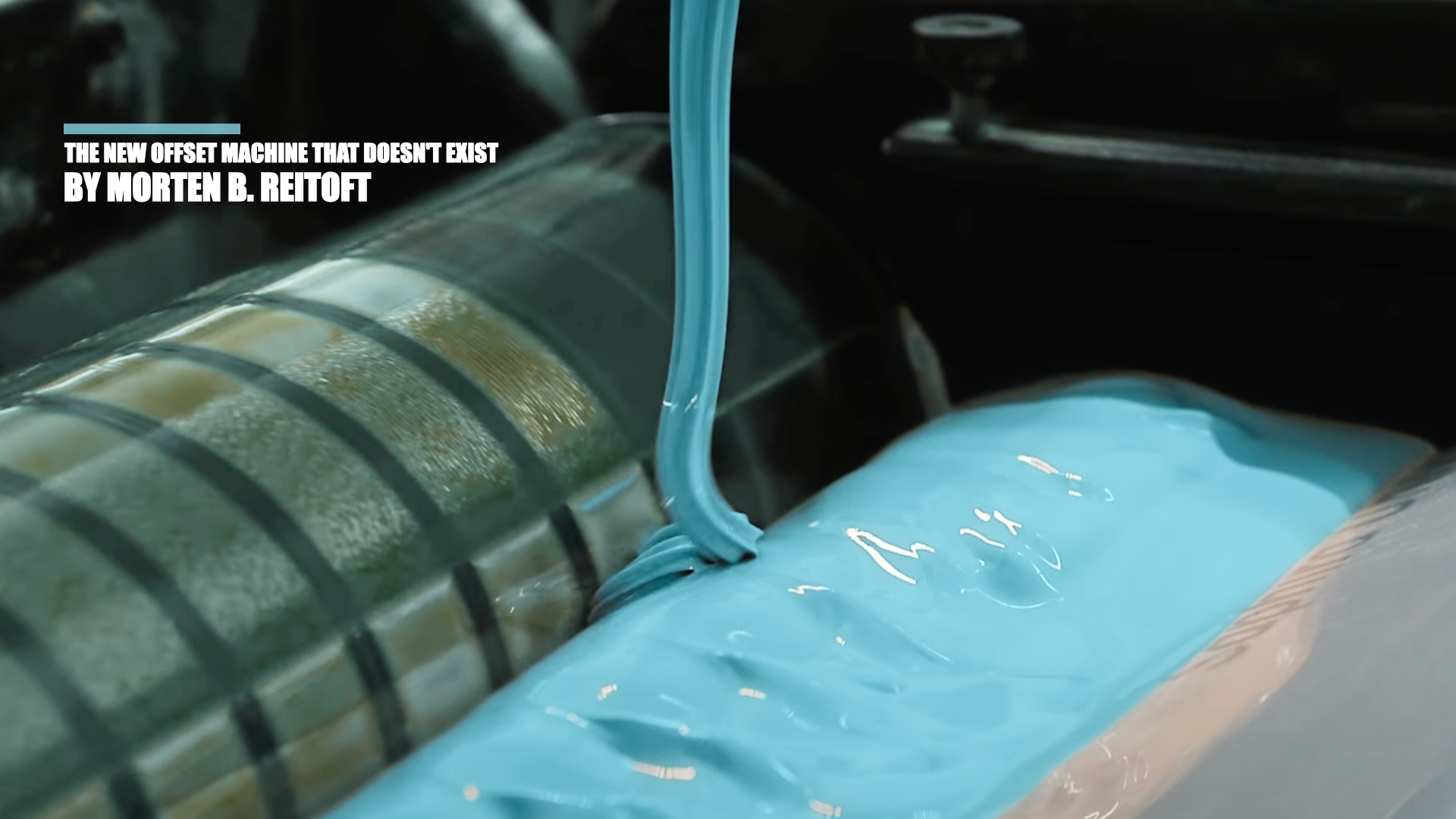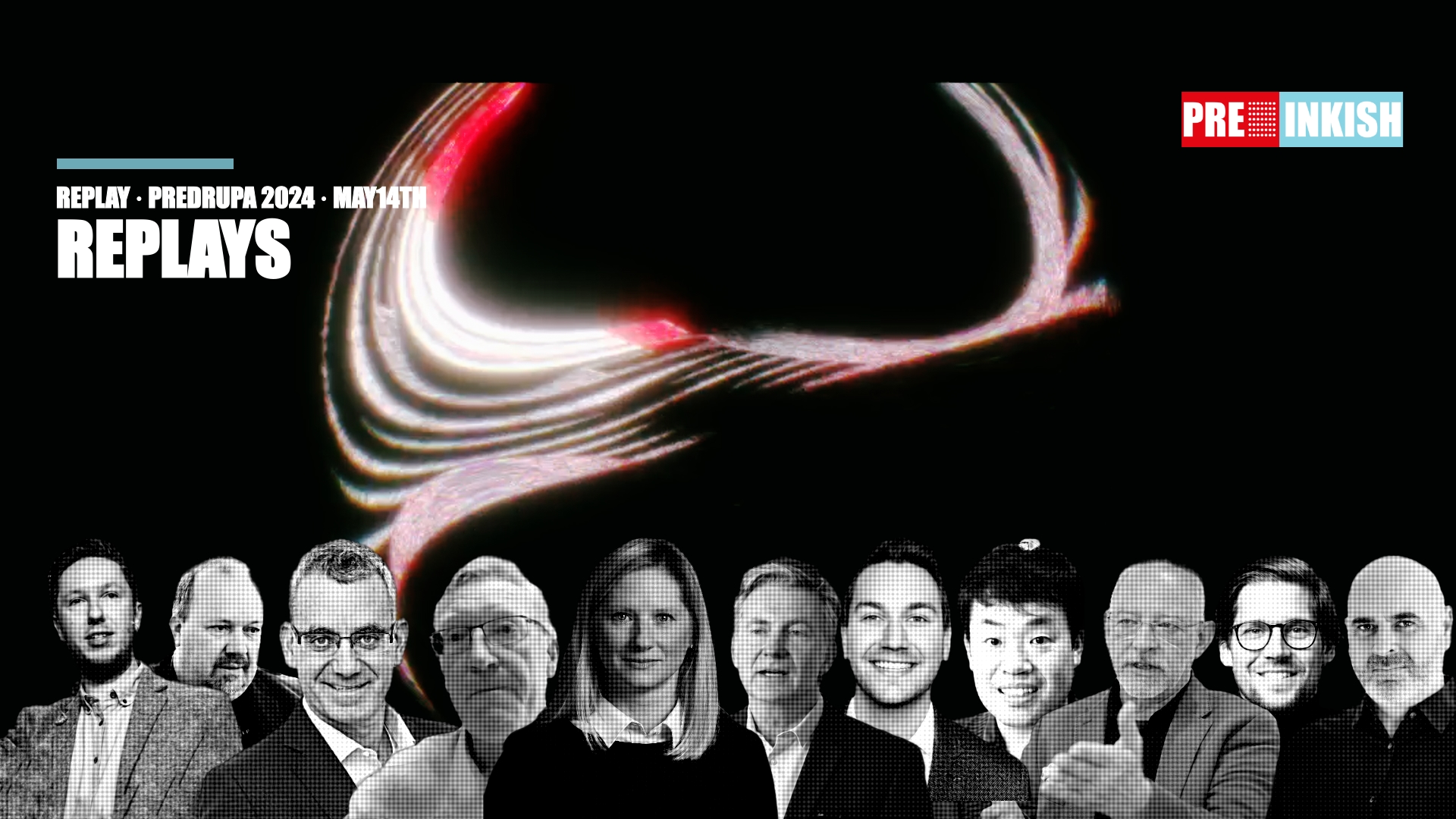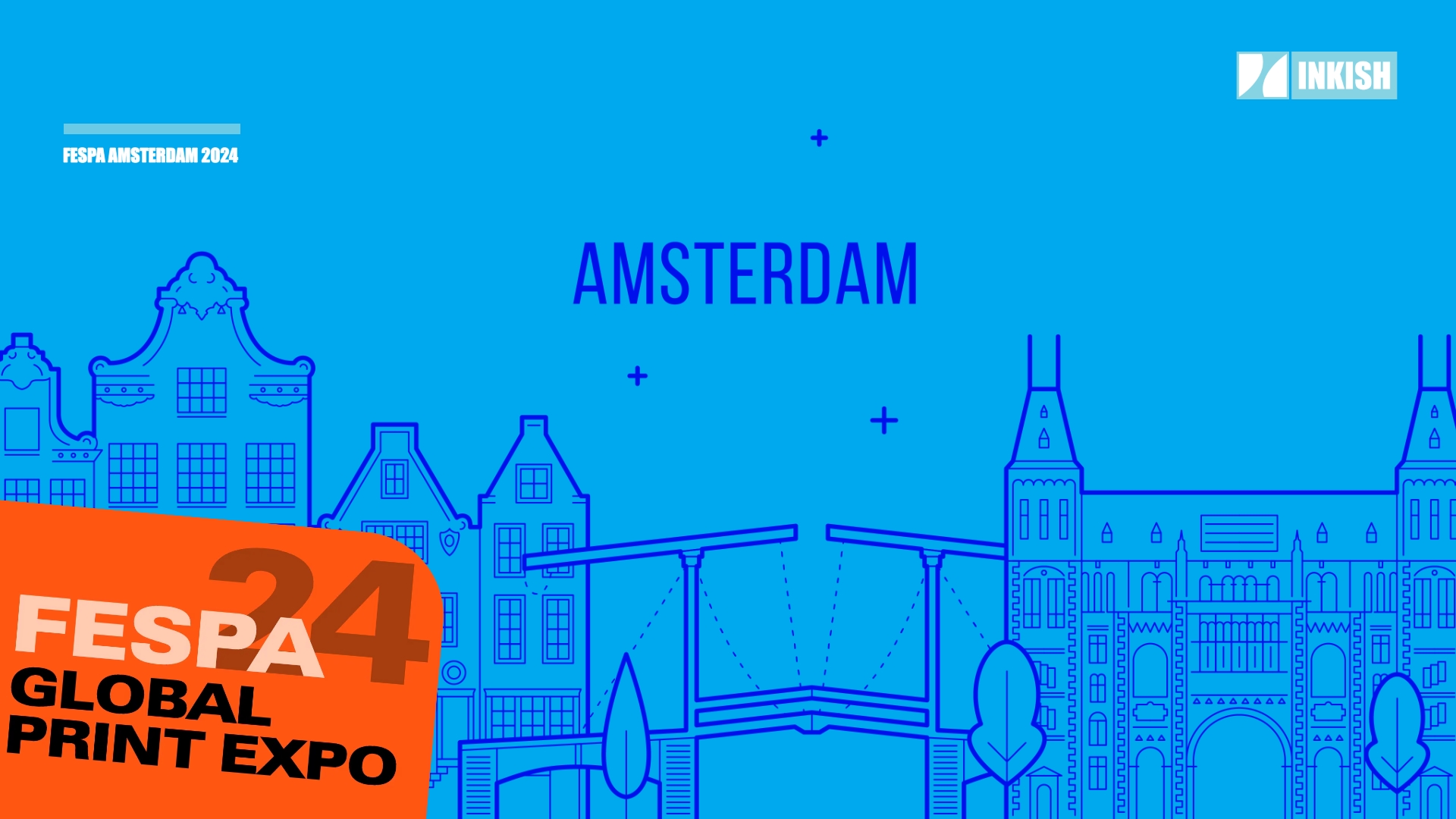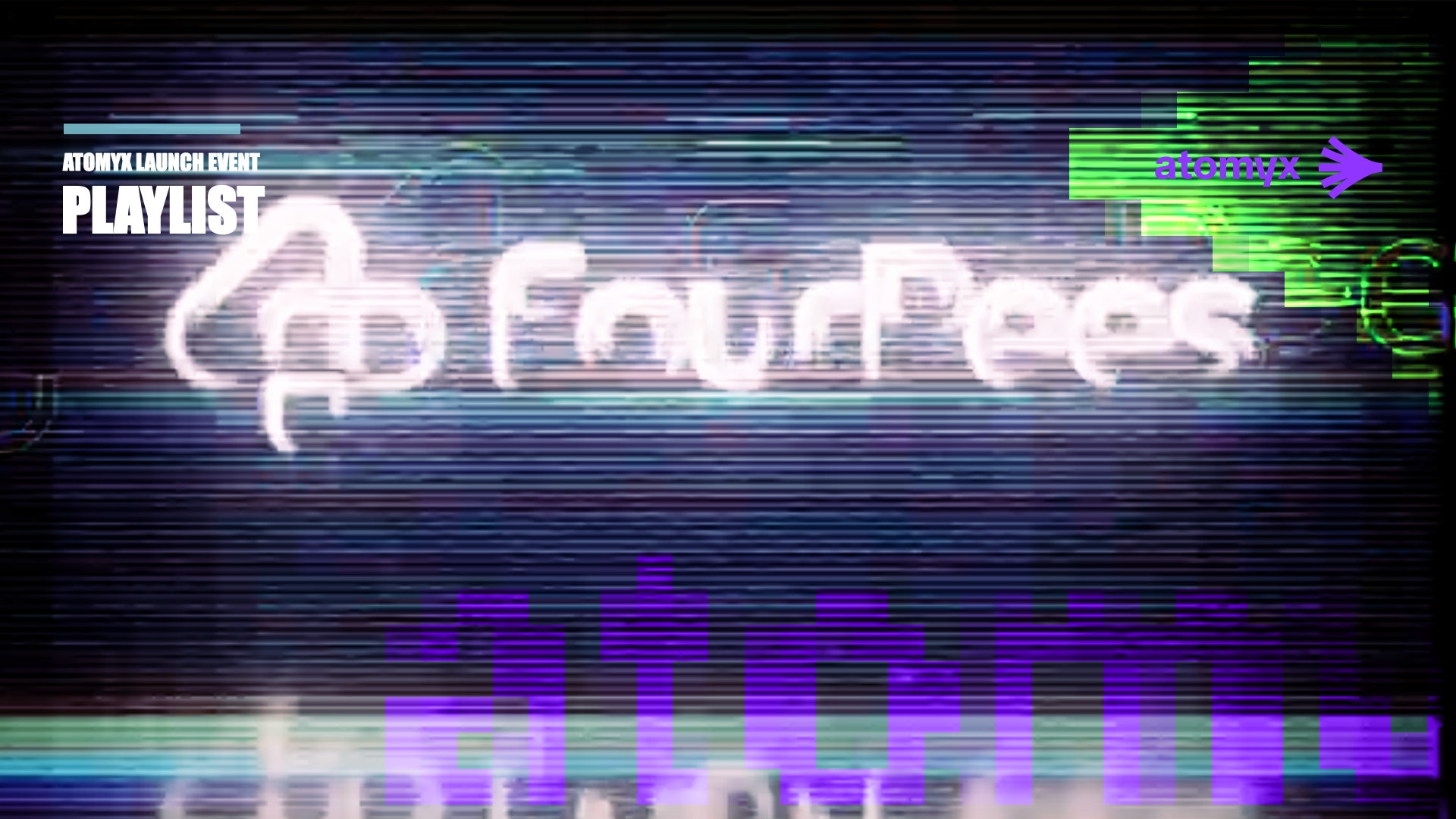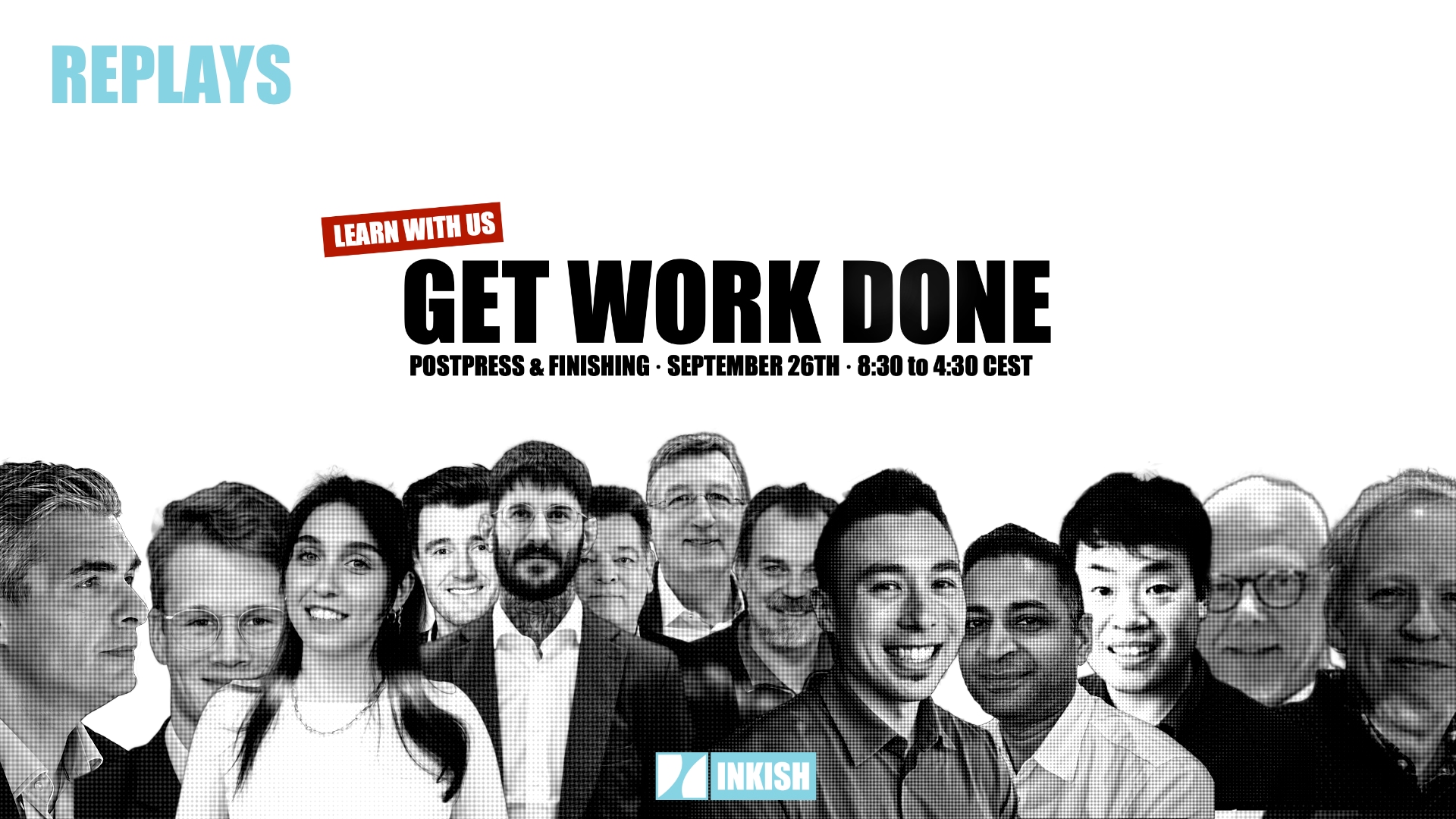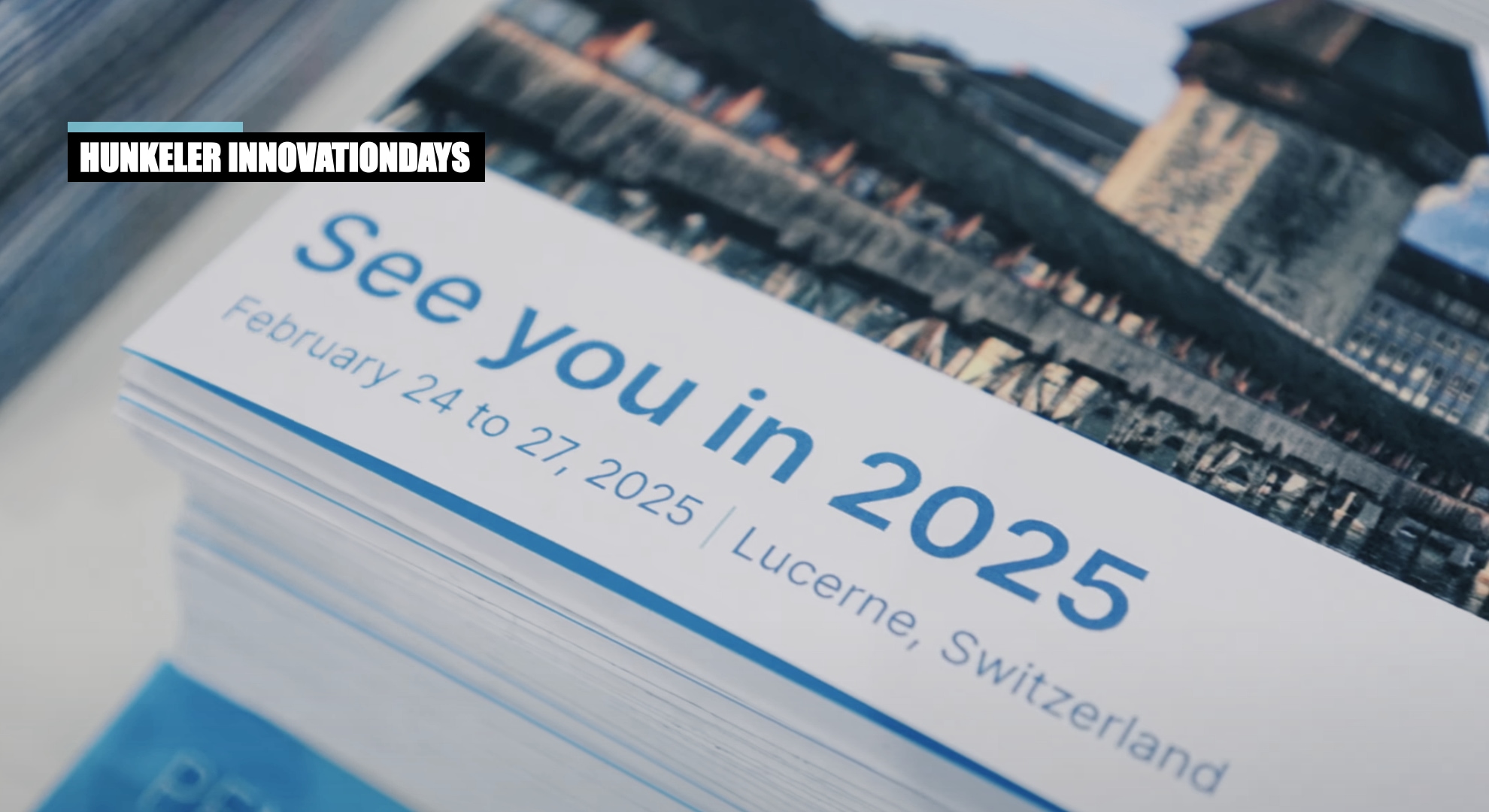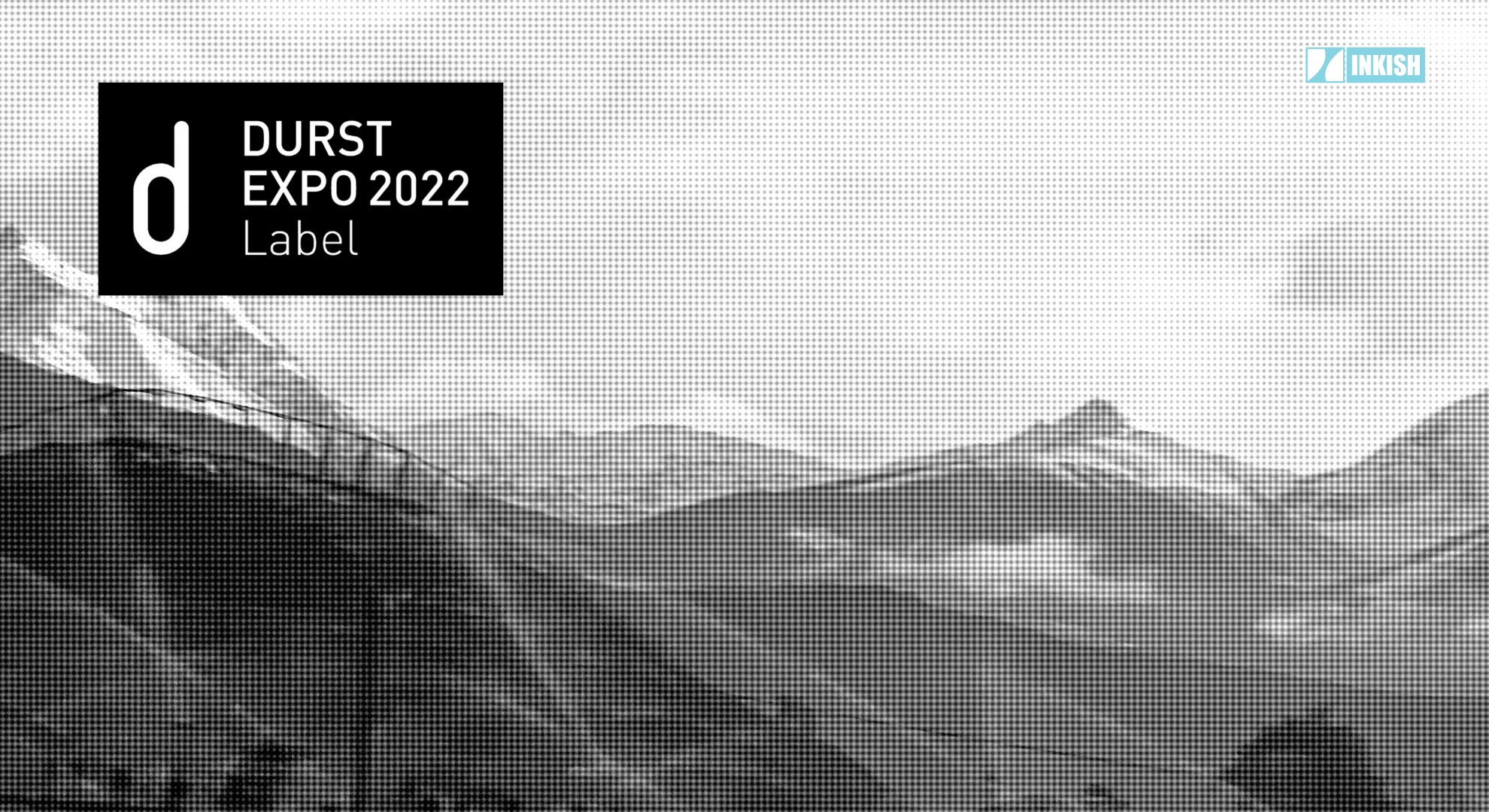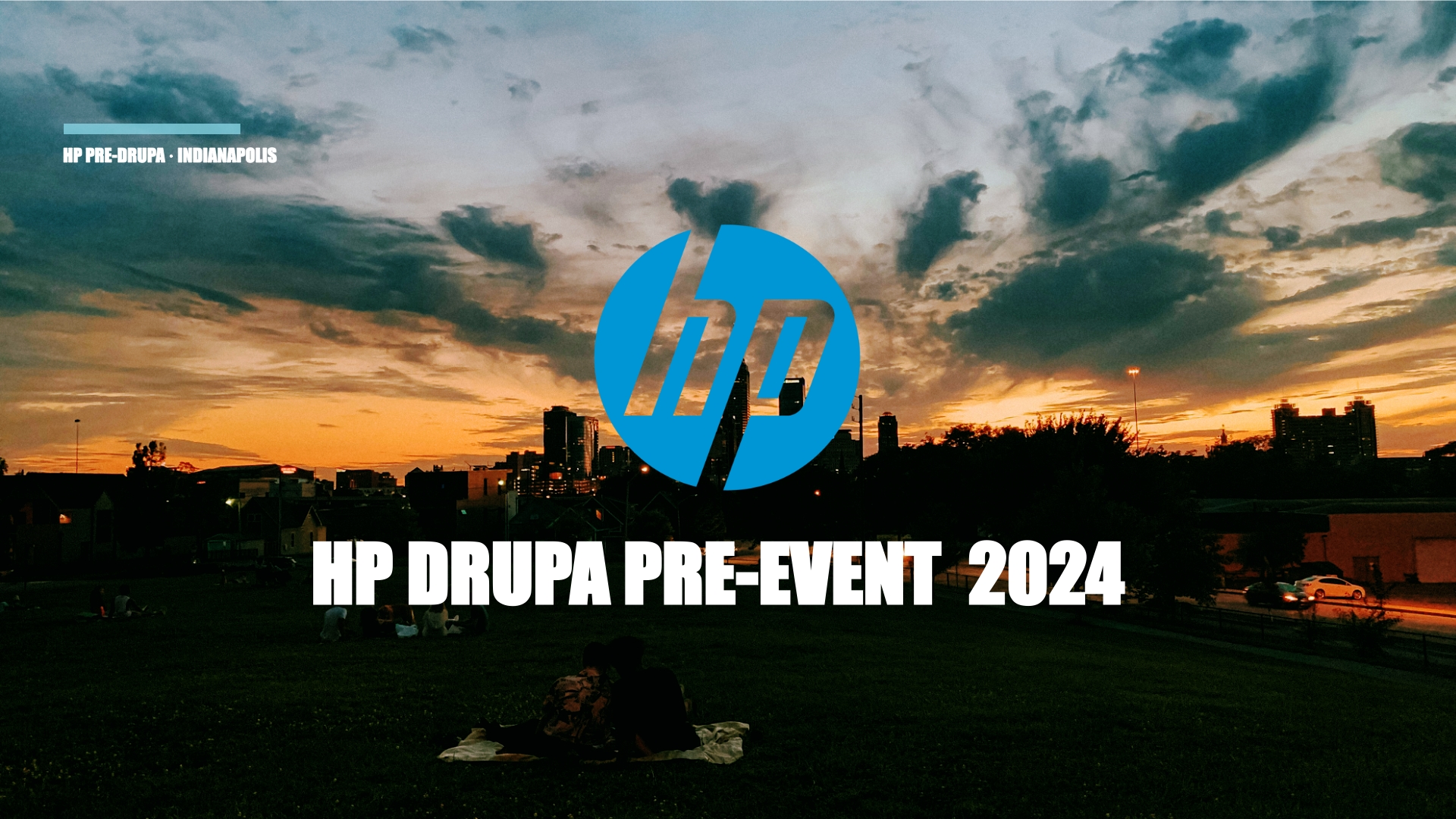Area Sales Manager Gilbert Van Cauwenberg · CGS · Workflow Summit · Stockholms, Sweden
Thanks. Good afternoon, or should I say good evening.
I don’t know about you, but my first thought, when I looked at the program I said, Oh my God, I have a presentation at a quarter past four in the session where the people have had a lot of input today.
And then I thought like, maybe the organizers of the event, they have the same strategy as me when I eat. I don’t know about you, but when I eat I always keep the best for last. So, that’s a thought that I thought, okay, maybe I just pleased myself about that.
As I said, a lot of exciting presentations today and I can imagine networking, a lot of input, so that’s what I thought, like hmm, maybe we need something to get our minds fresh. Right?
So if this works, I’m not sure if it works. Does it work? Okay. It does. Looking for the mouse. There we go.
So this is just a short video about some new exciting technology that is coming towards us. Just as a refresher for the brain.
(video)
Okay, now, let me be reassure … This is not the dental conference, right? Not that I’m getting confused.
Okay. Now, for the serious part. So, company name is CGS and let me just check if this computer also works with voice command. So this is the agenda for today, business pains of color critical production environment. The software that solves some of these problems is called the [inaudible 00:03:20] I will talk to you about the return on investment calculator and a software called CXF.
Now let’s see if the computer also works. Computer can have the next slide please.
Well, oh, maybe it’s a little box here.
CGS, who are we? Well, the core competence of the company is that it’s all about column management. Column management, print stability. What is important is that on these topics we work, manufacturer, independent.
When it comes to the last item which is called mock up proofing, we also have a software that allows you to create hardware mock ups of packaging productions. The difference here is that these solutions are coupled with the hardware. Like for example Roland or Epson printers.
CGS, who are we? Well, we’re a German company, we’re about 80 people, nice men and women around the globe, that was before I started, so now we are 91, exactly. And, I’m in charge for sales in eastern and northern Europe and I have the pleasure and are very proud that I can work with experts, column management experts in different countries. And for example, for Sweden, one of my colleagues is here. It’s Mr [inaudible 00:04:45] Berlin. Some of you will definitely know him.
Core competence of the company, we have a [inaudible 00:04:52] development for column management and we have pattens when it comes to that.
Now let’s dive into the topic. I started at CGS about one year ago and I’m not coming from the graphical industry and I thought like what is our software doing? What can it solve? So that’s why I came up with a notion called business pain.
Now if we look in a production environment for color critical documents, they’re are some business pains, and I tried to list them here. So for example, if it goes to customer satisfaction or money, that’s what it’s all about. There are some problems that can arise.
For example, the end customer, maybe some of you. You use a variety of print engines and all these print engines, they have their own software and their own technical settings in the software.
On the other hand, some of these engines they are unstable due to nature of the engine. Humidity, temperature changes, different things, different toners, output isn’t stable.
When you get an order, you calculate the optimal price based on the initial order. What is the best machine to process that order? But what about the followup orders? Is it still the same engine that is the best choice?
Different technologies, ink and toner, and you see the picture gets more and more and more crowded. Customers will ask you for house colors, spot colors, communication process, brand owners, design agencies, communication agencies, printing houses, ink manufacturers. How do you communicate about the price? Spot colors printing, they require a special set of inks that you have to buy that you have to manage the stock.
Down time of the machine due to excess ink and toner.
Staff is on holiday. The expert is not there. How can you process the job with the regular quality?
You name it, service calls, waste of time and energy, and most of all, you’re working with narrow margins.
Now, these are business pains and we can solve them. Now, don’t be afraid, we’re not going to tackle all of them today. I’m just going to focus on some of them. And this makes the bridge to the solution that we are talking about.
So we’re talking about how to reproduce spot colors with an extended ink set, instead of buying special inks, and we will talk about how to communicate about spot colors in an error free way.
How can we get customer satisfaction? Well we can allow the customer to make full use of the gamut of the machine. You can make him print, CNYK, to achieve spot colors, increase the saturation. For example, RGB images. Communicate the color correctly and most of all avoid wait time, money and energy.
Oris six gamut. It’s the name of the solution. What is oris six gamut? Well actually, you extend your color space of the machine you have with this software and it … I’m new in the segment, but you probably know that this is not new at all. It has been known in the past under different names; hi-fi printing, seven color process, end color printing, nothing new.
The main difference is that now it finally works, and this is what I’m going to show you. The applications where this comes to play is mainly in the packaging and label printing and it can be with different technologies like Flexo or digital printing. Also, when it comes to large format printing. For example, with high speed inkjet printing.
What is Oris six gamut? Well, you can read it. It’s a fully automatic color management software for extended color printing on digital and conventional presses. And, there are two main applications, I’m going to focus today on the first one. It’s the reproduction of spot colors using an extended ink pallet instead of spot inks. This is the main topic.
This is how to visualize. For example, you see the gamut of the different color schemes and here I’m not sure if you see a difference, but there should be a difference, anyway.
How does it work, oris six gamut? Well, basically it’s a very straightforward process, so if you allow me to start on … Well, that was the wrong button.
On the left hand side you have a pdf that includes the CNYK data and for example, pan tone separations. That file is processed by the oris six gamut software. The software will do color conversions, and in this case, we talk about orange, green, violet, which we added to the pallet of the machine, and then you print it either on a conventional press or on the digital engine.
The same goes for the process on the right hand side. When you talk about RGB data, how can you increase the saturation of these images? PDF containing RGB data processed by oris six gamut, the same process again, and printed on the conventional or the digital engine.
How does it work in practice? Again, straightforward process. It is like a wizard, so your first print the custom chart on the engine, we call it and make the fingerprint of the machine, like here, you will measure that in and based on that data, the software will start making the color conversions. So you have pdf data with pan tone colors, processed by oris six gamut and comes out a new data, re-separated. In this case with green and violet.
A concrete example, I was at Mount Roland in Germany last week where we had a similar presentation and did these kinds of test prints. So, in this case it was a 10 color print, CNYK plus six pan tone colors.
This is the print chart that you have here the CNYK test chart, and here you have it for the other colors, the fingerprint of the machine, the color conversion CNYK, additional colors, optimization of the spot colors. And, as a result, you have the same file printed again, in this case, CNYK plus violet.
Do you see differences? Yes. You see differences. It would not be normal if you would not see differences. The question is if your end customer can live with these differences or not? And, believe me, we are close. We are very close.
This is another example where it’s on a machine, CNYK plus orange, green and violet. So here we have a pdf data, pdf file that has nine pan tone colors and these are RGB images, so it’s a mixture of pan tone colors here and RGB images and it’s processed by the same software. So in this case we will re-separate the colors to CYK plus orange, green and violet. And, we do the same process for the RGB.
Nice of this application, but what I like a lot and what the users like is that it produces spot color reports. So for example, during the processing you could already see, for example, Delta E values, so that you can see if, with the existing extended ink palette, if you will reach a certain spot colors or not. That’s included in the software.
This is an example again, TGB images that you see after the re-separation, the images are much more saturated. This can be very appealing, for example, for HP indigo users where we did these kinds of tests.
Some of the key features, reproducing spot colors with the fixed ink palette, correction of spot colors, re-separation to the color gamut of your machine. What I like a lot is that it’s a simple process. If it’s not simple, people will not use it and actually I don’t like to say it, but you don’t have to be a color management experts to use the software, which some people like which other people might not like.
Some other key features. You can also simulate the ink limitation that you will use on the engine where you will do the final print shop on. Of course, maximum number of spot colors can be limited and the application will automatically avoid irrelevant color combinations.
Multichannel profiles, but it can also be custom multicolor charts, so if you are using your own house standards you can create your own test charts including your own house standard. Now we have link to pan tone libraries and we support, for example, also CXF data. I will talk about CXF later in the presentation.
Now, after you print your job, you also would like to measure if you really achieved the spot colors and this is the part where there is a quality check included, where after printing you can check if what you printed also achieved the standards that you wanted to achieve.
Now it works on basically all devices printing and channel. These are some examples, maybe are using some of these.
The bottom line is that there are a lot of machines out there in the market that are not being used to the full extent.
Example of a return investment calculations. So this was calculated at a Chinese company, very big printing company. They have Monroe 700 Evolution and one of the test jobs that we did there, they printed 13 colors. They did it in two runs, the first run with seven colors, then the same job processed in the machine, again, six colors.
Now, as you can imagine, if you do that, you have to clean the machine all the time, so the machine is not ready, you have to use a lot of plates, this costs time and effort. And that customer was so friendly to share some information with us.
I blended out some, maybe some sensitive information, for example, the customers they’re working for, and they calculated, for example, here, the total time that they saved for each job. And, astonishingly, in six months time they saved about $65,000, euro by using our software. This is the calculation based on the time.
Then they did the same kind of calculation based on their ink consumption. So you have here the special inks that they purchased with the weights. I’ve hidden the prices and here are the standard color set that they purchased. And also here they had a return on investment of $2,500 euro. But this is not on six months, this is for one job, for one customer.
What I like about this software is that it actually allows to make a very good return on investment calculation.
Some examples, so this is the company they printed for Proctor and Gamble with the Monroland engine, so another is the Comexi machine, HP Indigo, Durst. I always like Durst, because those who know German, Durst actually means thirst and these machines really put a lot of ink on the paper. That’s why we like them.
Now this is a special one, this is an HP Indigo at a customer in Rome. Now I have a question for you. Customer in Rome, Italy. There is something on the picture. I call it unbelievable. Now, what could that be? Think about Italy. Italians, way of life. No. They’re … I would never have believed that Italians also eat takeaway pizza.
Actually, they did. So, maybe it was because one of my colleagues was there and he’s German, so they thought like, we’re not gonna exaggerate too much.
There’s a part on six gamut, maybe some information about CXF. Those who might not yet be familiar with CXF. I’ve heard it a lot, several times during the other presentations during the day, so CXF is a data format and the way we see it, it’s actually a very good solution for the brand owners.
So this is a cloud based solution where it allows to communicate very clearly without errors and misinterpretation the colors through the whole production process, from the brand owner to the printing house, to the ink manufacturer. We like to illustrate it here with … I think it’s a German car. It’s not a diesel, so we don’t have to be afraid. So what you could do with the CXF data, how it works. You could actually measure a color with a spectrophotometer. You capture the true color, you embed it in the pdf. It’s an ink descriptor, so you could actually send that information to the ink manufacturer and the ink manufacturer will exactly reproduce that color.
And this comes to the conclusion the part of CXF. I hope you see the advantages of using CXF data format, because it allows through the complete process of printing and designing to clearly communicate without misinterpretation about the correct color.
I try to keep the presentation a bit shorter because I appreciate that. Yeah. Many of you are still there, eyes are still open, well, more or less. So I didn’t want to make it too technical. If you have any further questions, either myself or Magnus, we would be very happy to answer any that you might have.
A question about the quality control that you find [inaudible 00:21:15] and how it’s not …
Would you care to or? Yup. Okay.
So, there is a solution called [inaudible 00:21:26] certified, where you … Actually the print results that you want to achieve, you want to achieve a certain standard, so you use a measuring device. Sorry, for my very basic language. You measure the color and recalculate the delta E values of that color compared with the standard.
What measuring device do you use?
Variety, it depends on what the color of the customer use can be X-rite, I1IO, for example. Conica FD9.
More questions, not all together, otherwise it gets confusing.
So, …
Maybe we could have –
Thank you very much. Thank you.































